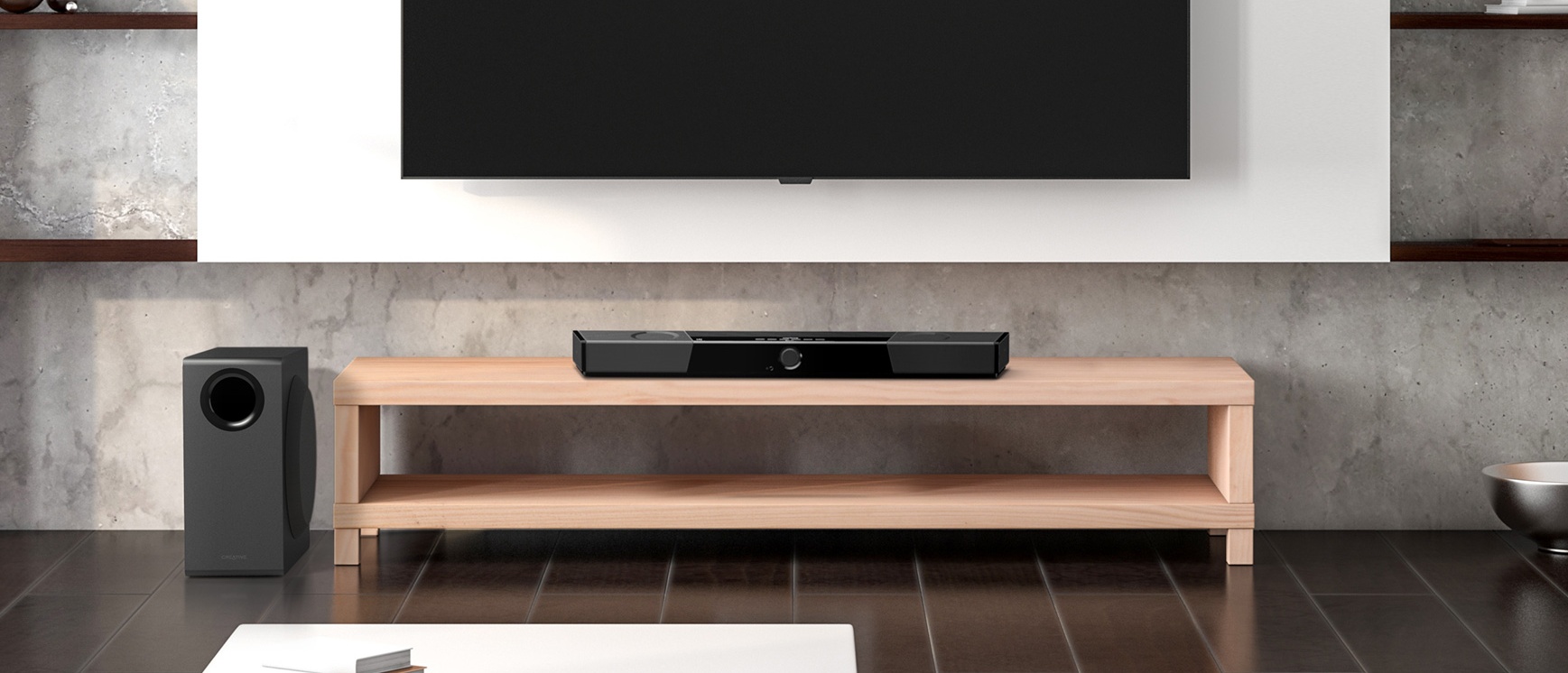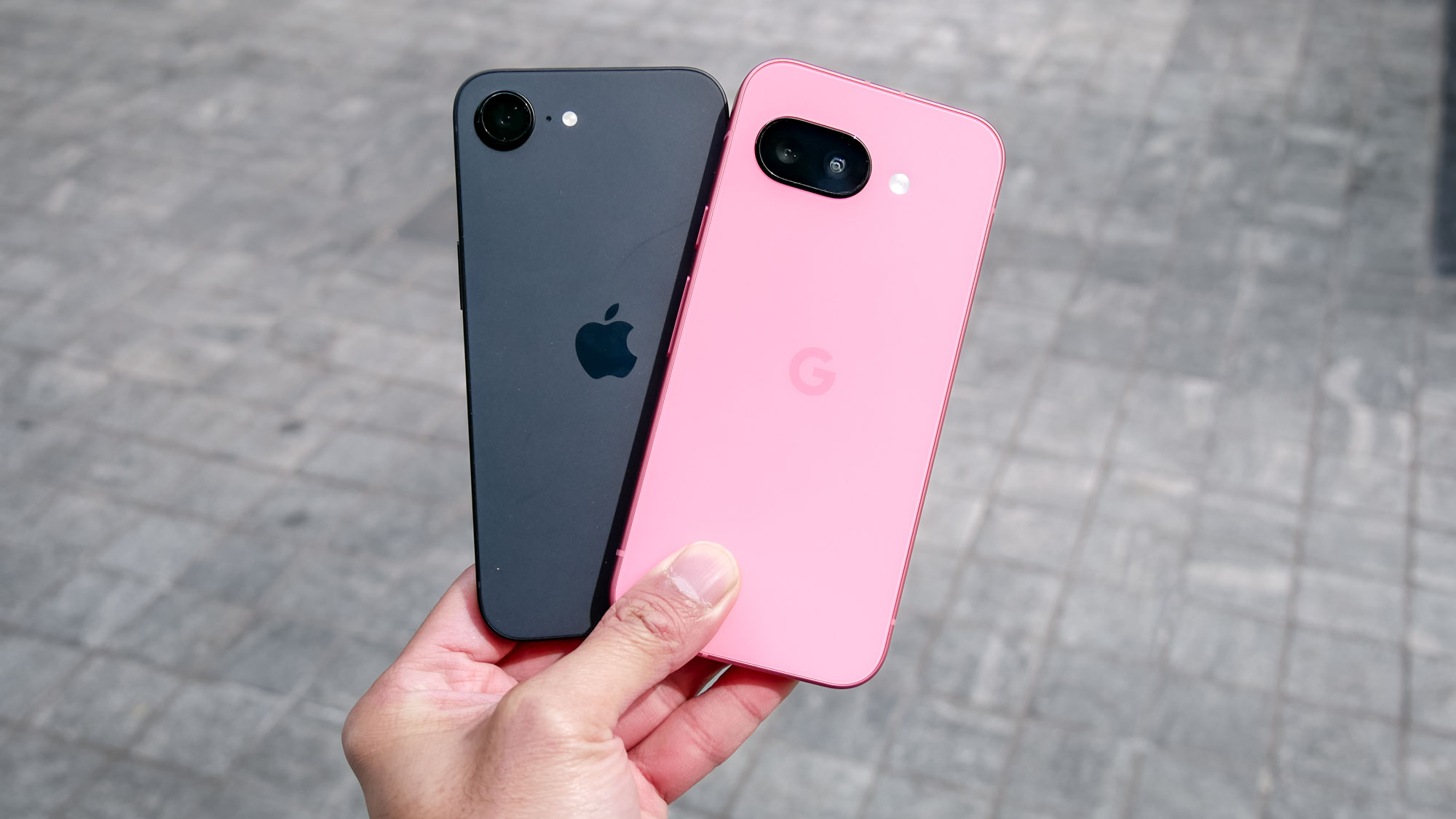Tom's Guide Verdict
The Creative SXFI Carrier is the first Creative soundbar to support its SXFI surround sound tech, though not in the way you might think. Luckily, it’s still a respectable Atmos soundbar and subwoofer combo.
Pros
- +
Rich and adjustable sound
- +
Varied connectivity
- +
Wireless subwoofer
Cons
- -
SXFI feature needs a separate pair of headphones
- -
Cheaper Atmos soundbars available
Why you can trust Tom's Guide
The Creative SXFI Carrier is the company’s first soundbar to support its Super X-Fi (SXFI) surround sound tech. Although, it’s not in the way that you might expect from a $999 soundbar and subwoofer combo, even one with sideways- and upwards-firing drivers like this.
Price: $999
Speakers: 7 x soundbar drivers, 1 x subwoofer
Ports: 3.5mm aux in, optical in, USB-C in, 2 x HDMI in, 1 x HDMI eARC/HDMI out, SXFI out, sub out
Wi-Fi: N/A
Size: 3 x 34.6 x 5 inches (soundbar), 17.7 x 8.9 x 16.9 inches (subwoofer)
Weight: 7.9 pounds (soundbar), 28.2 pounds (subwoofer)
Rather, the Creative SXFI is designed to pair with a set of SXFI-enabled headphones, like the Creative SXFI Theater or SXFI Gamer. It then acts as the source — or indeed, a carrier — for the signal that enables the surround sound format on the headphones. On a big TV speaker that might sound like more of a fun extra than an integral feature, but as our full Creative SXFI Carrier review shows, this soundbar has a lot to offer even if you never touch SXFI.
- Our picks of the best soundbars
- The best cheap soundbars for home theater on a budget
Creative SXFI Carrier review: Price and availability
- $999 U.S. and £899 in U.K.
- Release date coming soon
The SXFI Carrier isn’t actually out yet, so visiting Creative will only let you register interest. I’m told it will cost $999 when it eventually launches in the U.S. and £899 in the U.K.; those living in the latter can check the Creative U.K. site. It seems like only the lucky Singapore has the honor of an initial release.
$999 is neither remarkably cheap nor outrageously expensive for a beefy soundbar/subwoofer combo, though it is pricier than the excellent Sonos Arc. That said, the SXFI Carrier is meant as a successor of sorts to the Creative X-Fi Sonic Carrier, which launched at a whopping $5,800 back in 2018. So y’know, perspective.
Creative SXFI Carrier review: Design
- Compact and understated design doesn’t take up too much room
- Plenty of ports, including 2 x HDMI and eARC support
- Helpful LCD display
The SXFI Carrier certainly looks understated. While largely plastic, the soundbar is a tasteful mix of matte and gloss finishes, while the 10-inch wireless subwoofer is compact enough to tuck away without being too small to produce a suitable rumble.
Clearly-labeled and easily accessible buttons on top offer a useful backup to the included remote, and an LCD display helpfully keeps tracking of sources, sound modes and volume changes without distracting you from the TV. At just under 35 inches wide the soundbar might look too narrow for truly massive screens, but it has a mode to help with that — more on these modes shortly.
This is a fully-fledged Dolby Atmos soundbar, complete with upwards-firing speakers to bounce sound off your ceiling and create that extra sense of 3D height.
You also get an impressive array of ports, not to mention Bluetooth connectivity. Dual HDMI inputs accompany the eARC-enabled HDMI port, a boon for cable-cutters, while an optical input provides a more traditional means of connecting your TV. If you wish you can also use the subwoofer with a wired connection, instead of relying on Bluetooth.
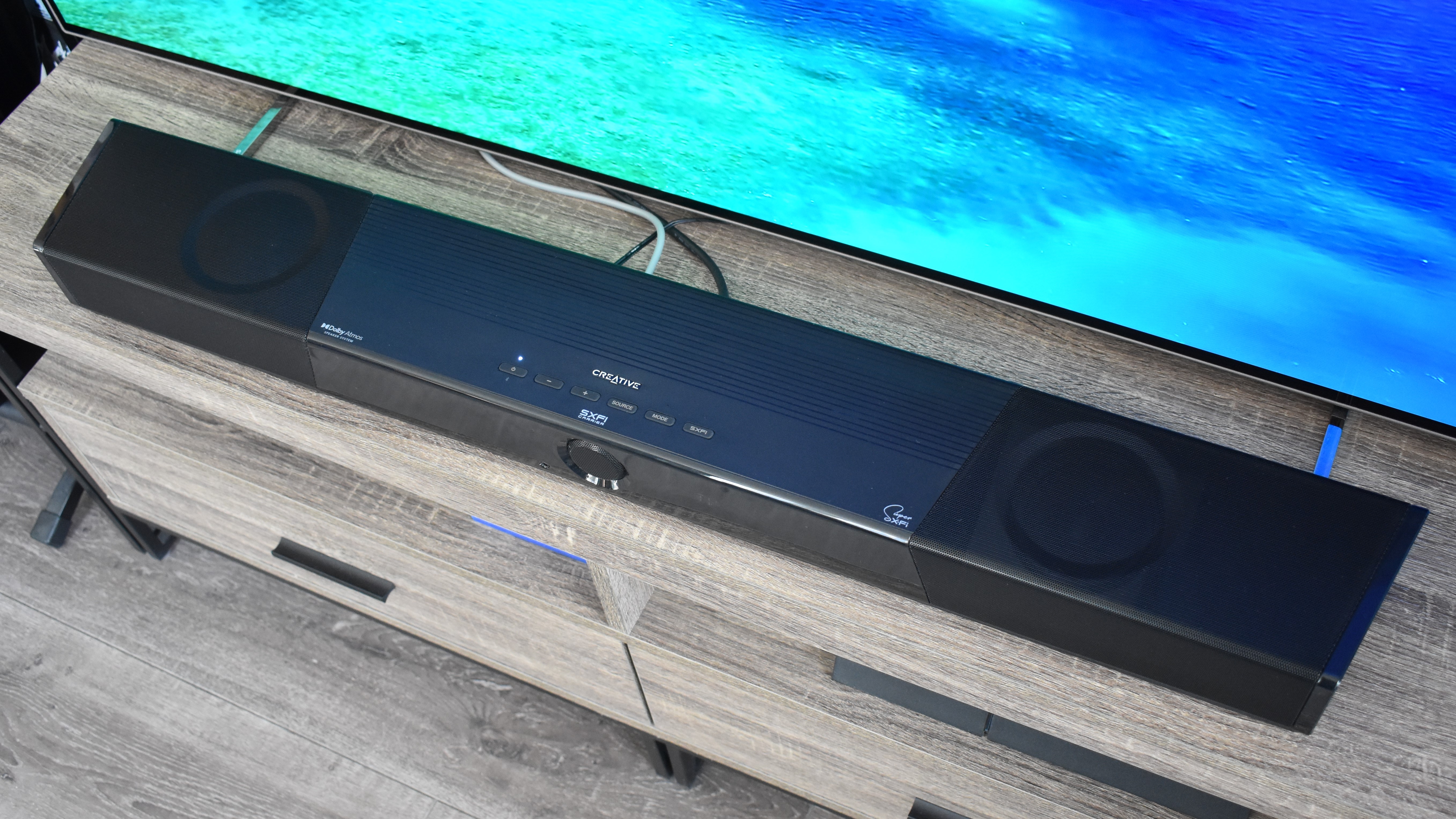
Extra flexibility comes from the 3.5mm aux input, a USB-C input and the dedicated SXFI out USB port. This is where you can plug in a dongle to connect your SXFI headphones, though if you were hoping your $999 would cover a pair, you’ll be disappointed.
Creative says that SXFI will work to an extent on any headphones, but to get the best results you'll need a pair of its own SXFI-branded models. You'll need to buy these separately, which to me seems odd. Should you really need to buy additional peripherals to use a feature that the original product literally has in its name?
Fortunately, there is another, likely more familiar way to get pseudo-surround sound from the SXFI Carrier. This is a fully-fledged Dolby Atmos soundbar, complete with upwards-firing speakers to bounce sound off your ceiling and create that extra sense of 3D height. The lack of satellite speakers means this isn’t “true” surround sound, but as we’ve seen from numerous standalone Atmos bars, sometimes the effect is pretty convincing.
Creative SXFI Carrier review: Setup
- Easy with HDMI eARC
- SXFI setup much more complicated and requires multiple devices
Having an eARC port will always make the physical part of soundbar setup trivially easy, as long as you have an HDMI ARC or eARC port on your TV: one cable connecting the two and you’re done. The SXFI Carrier is no different, and it didn’t take long to get the wireless subwoofer paired either.
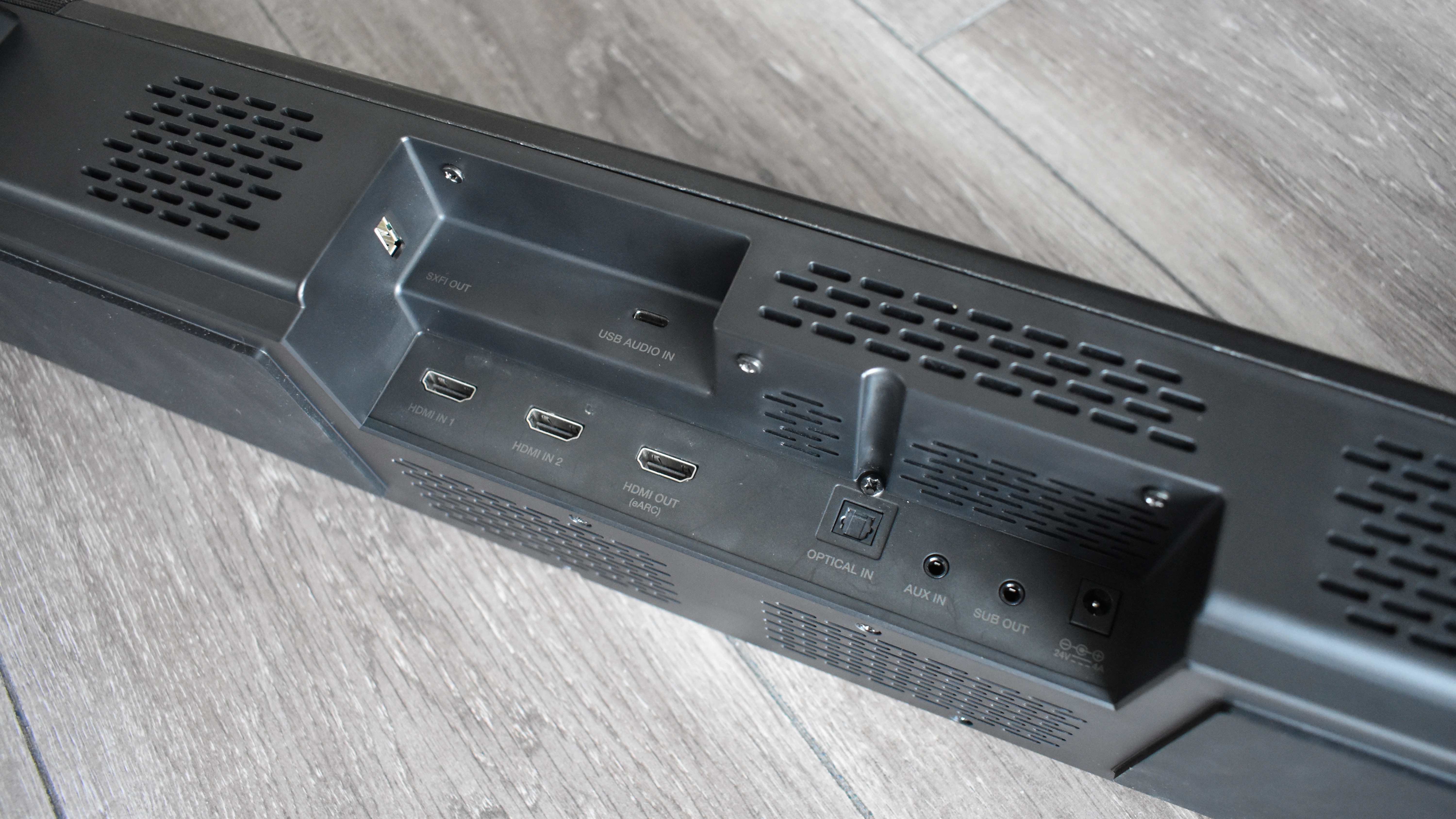
Configuring SXFI headphones can be more involved, as I found when attempting to pair the SXFI Carrier with the SXFI Theater wireless headphones. Because the entire system is based around personalizing sound output to the shape of your ears, I first had to download the mobile app and use my phone camera to take photos of my ears. Fair enough, that’s no different to how Sony 360 Reality Audio works.
However, to apply my newly created profile to the headphones, I was then directed to get my laptop and plug in the SXFI Theater’s USB dongle. Then, back on my phone, I had to perform a wireless setup process through the app to connect my phone to the dongle (which is still connected to my laptop at this point). I could then transfer the profile saved on my phone to the dongle, which after a few minutes would be ready to remove from my laptop and get slapped into the SXFI Carrier’s USB port instead.
Customized surround sound was never going to be plug-and-play but I can’t say I’ve ever used a soundbar that requires two additional devices, not counting the headphones or the dongle, to set up its headline feature. Creative has since been in touch to explain there's an alternative method (see the "Setting up SXFI Theater" on the Creative site) that doesn't require a laptop, but this wasn't made clear in the printed instructions.
Creative SXFI Carrier review: Sound quality
- SXFI not that impressive
- Atmos much better, especially in Superwide mode
- Versatile mix of other sound modes
What’s more, after all that complexity, the effect of SXFI was merely decent. The digital surround sound was convincing enough, and the soundstage was appropriately wide, but the SXFI Theater couldn’t pump out enough bass for the cinema-like quality that Creative promises. It is an improvement on the average pair of standard Bluetooth headphones, in the rare instances where using a pair of headphones instead of your new £999 soundbar makes sense, but as far as home cinema is concerned I don’t think SXFI will ever be the game-changer that Atmos was.
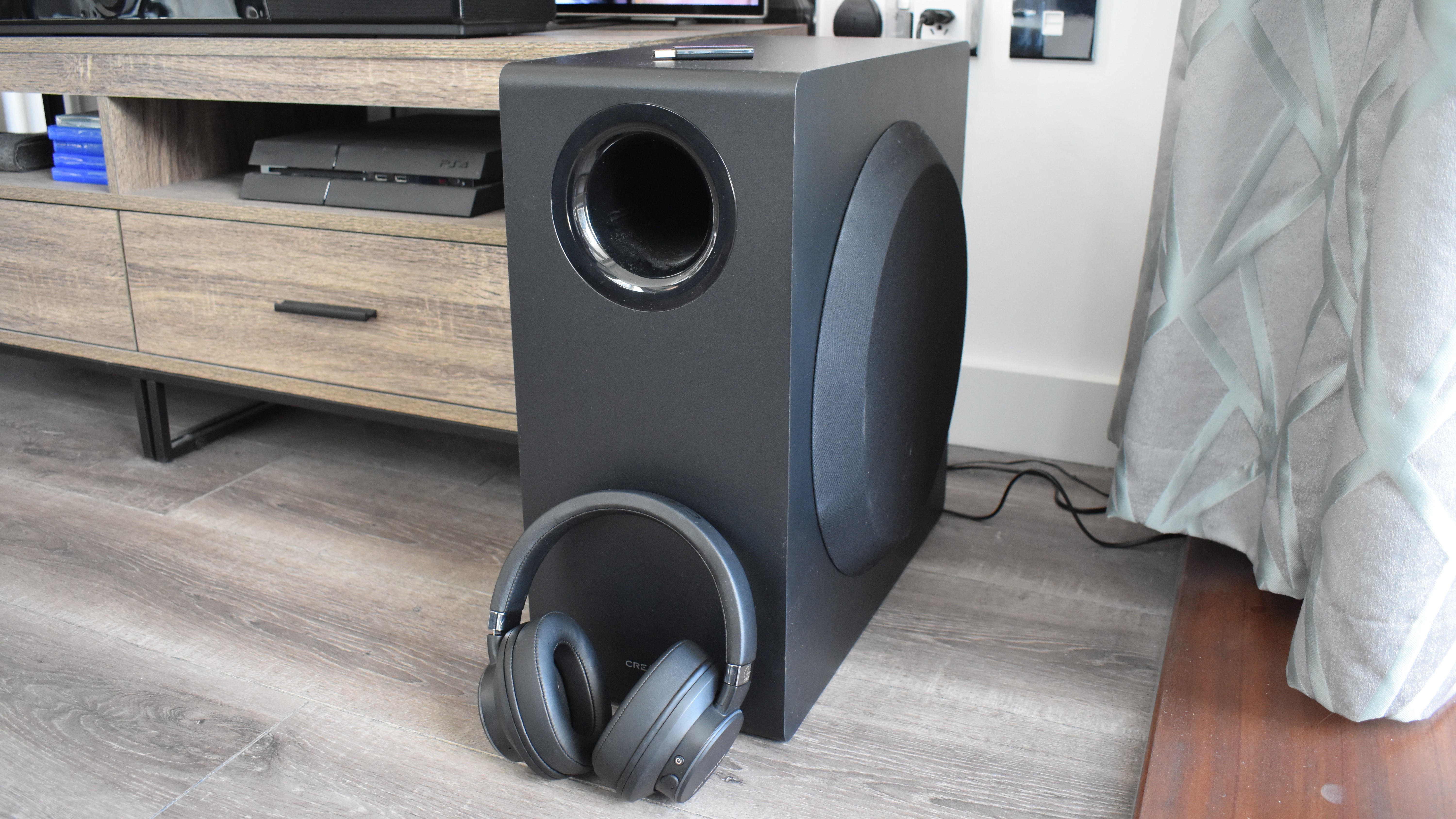
Speaking of which, the SXFI Carrier makes up for its underwhelming, cost-inducing headphones trick by simply being a good soundbar. Admittedly, its implementation of Atmos doesn’t make the soundbar a like-for-like replacement of full surround sound systems, but for a single soundbar and subwoofer it works fine.
There’s clear distancing between the left, right and center channels, which added to the excitement when rockets flew past in Outside the Wire. The height effect could perhaps be stronger: when Our Planet showed dive-bombing birds or gorillas sliding down trees, there was a tangible sense of sound origins moving from the top of the screen to the bottom, but never a feeling of that something zooming over my head or landing behind me.
The SXFI Carrier makes up for its underwhelming, cost-inducing headphones trick by simply being a good soundbar.
Nonetheless, Atmos on the SXFI Carrier definitely adds a certain something, even in content where the Dolby mastering is relatively restrained. And that’s all just in Movie mode — there are plenty more modes to play with if you want to adjust the sound.
Neutral is the flattest, but also the most balanced, so depending on your tastes might be even better for music playback than the Music profile. This brings vocals to the forefront and does the same with dialog in movies and TV, so proved surprisingly suitable for documentaries. Night mode quietens everything down and reduces the bass punch, to avoid waking the neighbors.
Movie mode sounds quite close to Neutral, albeit with much louder soundtracks. Dialog is also boosted to compensate, resulting in a more dramatic sound overall. My personal favorite mode was Superwide, which recessed dialog slightly but widened the soundstage dramatically.
This works great if you have a large TV, and even if you don’t, the extent to which sounds on the left and right of the mix almost begin to wrap around you is seriously cool. The only catch is that you need to be sat in line with the middle of the soundbar to get the full effect, so it may not suit big living rooms with multiple chairs and couches spread out.
Overall, there’s a lot to like about how the SXFI Carrier sounds. It’s solid and impactful, and the subwoofer adds more than enough room-shaking low-end. Crucially, it does so without making the bass sound too boomy or unrefined.
Creative SXFI Carrier review: Verdict
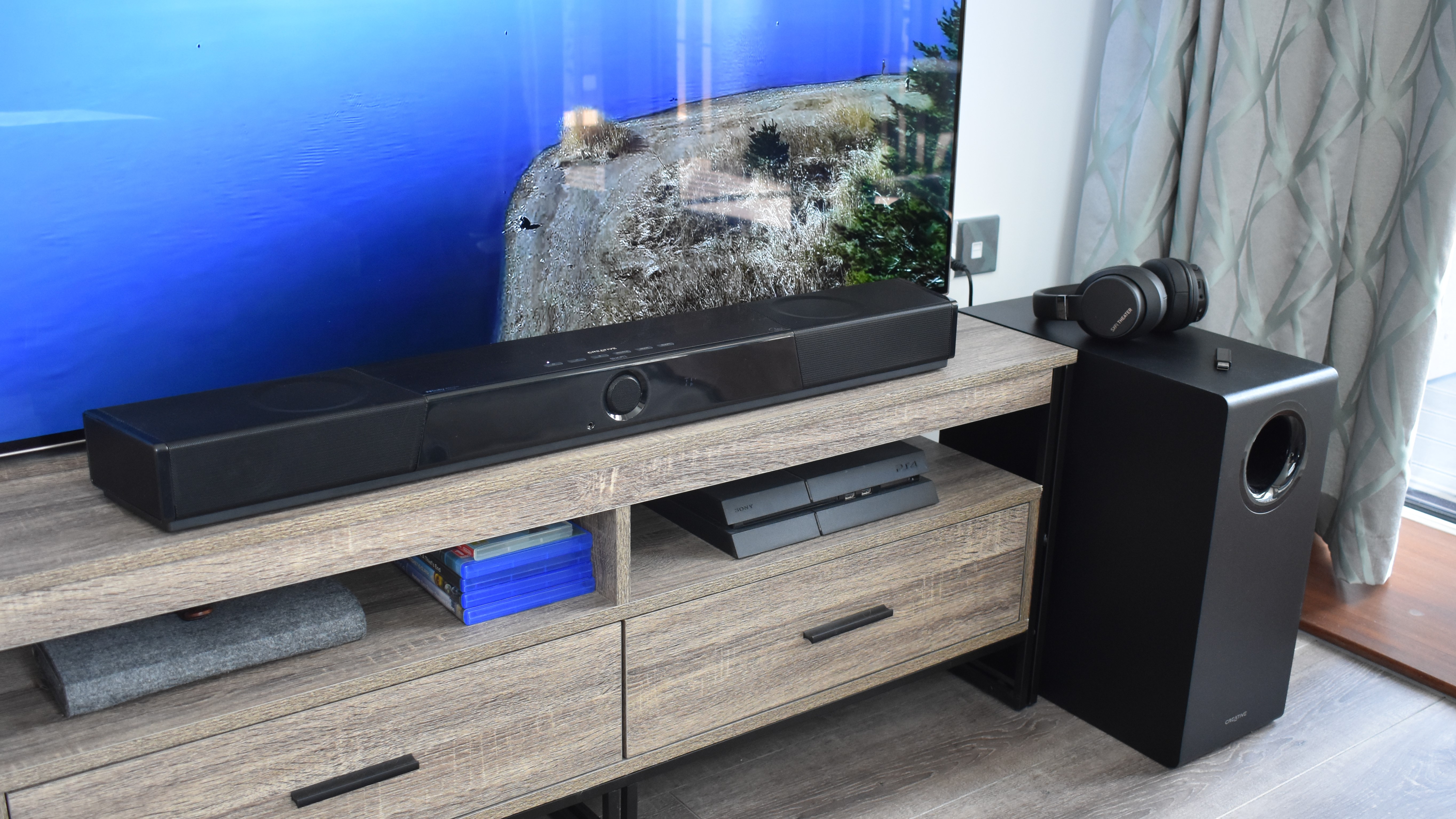
It’s unfortunate that the SXFI Carrier has to succeed almost in spite of Super X-Fi, rather than because of it, and while you can ignore it there will always be the nagging sense that perhaps you paid extra for an unused feature.
Still, while that might preclude the SXFI Carrier from joining the all-time soundbar greats, its general sound quality, wealth of connectivity and customization options mean that you’d never feel ripped off either. There might be odd occasions when you’ll want to switch to headphones — if it’s late at night, for instance, or if you have a roommate trying to work from home — but for the most part, you can simply and happily treat the SXFI Carrier as a serviceable Atmos soundbar.
- More: We've tested the best outdoor speakers for your porch or patio
James is currently Hardware Editor at Rock Paper Shotgun, but before that was Audio Editor at Tom’s Guide, where he covered headphones, speakers, soundbars and anything else that intentionally makes noise. A PC enthusiast, he also wrote computing and gaming news for TG, usually relating to how hard it is to find graphics card stock.
